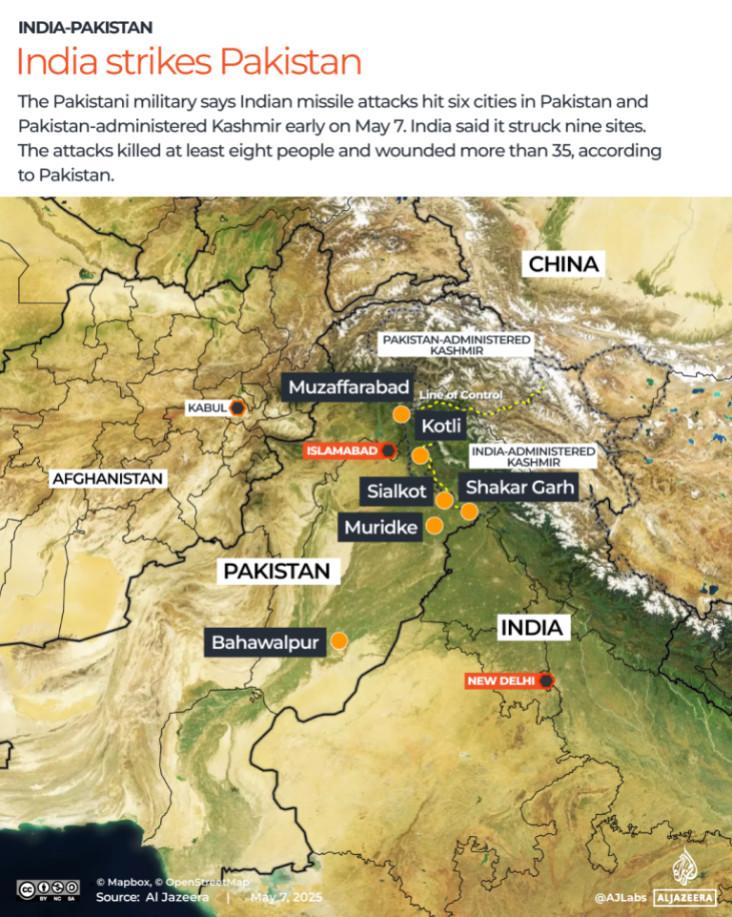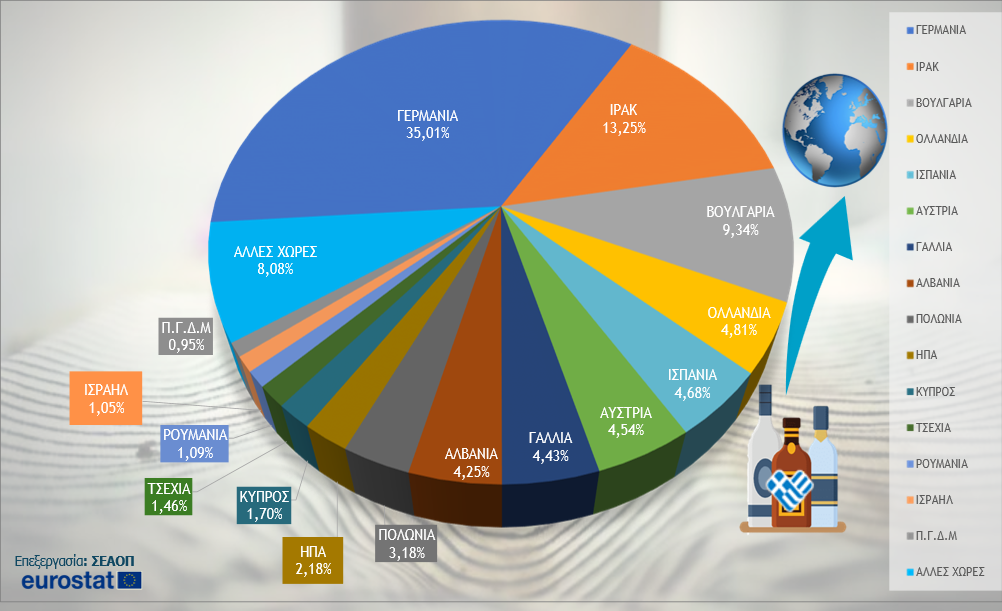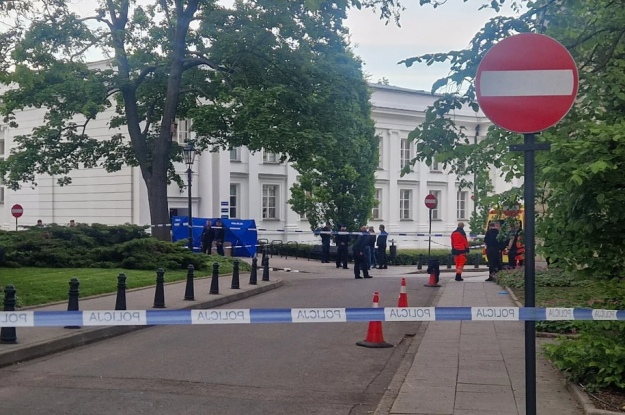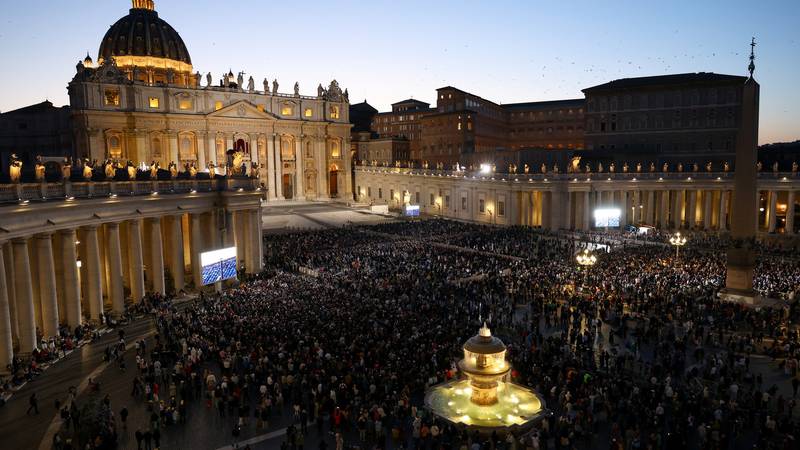India – Pakistan: Will they go to a full -scale war? – the historical background of the conflict

Increase the dead of the dead after the start of ‘Sindoor’ business by India against Pakistanwhich is committed to responding to the attacks at six points on its territory and in the Kashmir section it controls.
The Pakistani army speaks of 31 dead civilians. Twenty -six were killed in India’s missile attacks, while five other civilians died along the artillery fire control line.
India, for its own part, has announced three dead at the same spot due to fire on Pakistani.
India started the « Sindoor business ».
Where did India
The tension between the two nuclear states has risen sharply after a deadly attack that cost the lives of 26 people in Indian cashmere.
India accuses Pakistan of the attack, with Islamabad rejecting the charges.

Source: Al Jazeera
What are the causes of conflict
The roots of the Kashmir conflict go back to the division of British India in 1947, which led to the creation of a mainly Hindu India and a mainly Muslim Pakistan, as the New York Times reminds them.
In October of that year, the Hindu monarch of the prince of Kashmir by Muslim majority joined India, but Pakistan claimed the ground and tried to occupy it with military violence.
An agreement with the UN mediation in 1949 introduced a ceasefire line, dividing the cashmere.
After the wars of 1965 and 1971, the cease line of fire became the control line, with India holding about two -thirds of Kashmir and Pakistan the rest.
However, the dispute remains unresolved.

The control bar. Source: Al Jazeera
1987 elections to Indian Kashmir
A uprising in the Indian administration of Kashmir began in the 1980s, mainly due to the resentment of the population there, with Pakistan finally supporting some organizations, experts cited by NYT.
The local elections of 1987 were widely regarded as standing, resulting in a disadvantaged Muslim parties coalition.
« This has led Kashmir’s political activists to conclude that they could never achieve their political demands in the ballot box, » said Christopher Clary, an Associate Professor of Political Science at the University of Olympus.
« A mainly local uprising emerged, » he said, « but in the following years it was adopted by Pakistan -based organizations, » he noted.
Among the Kashmir -focused organizations, some supported the region’s independence, while others wanted the Kashmir Indian side of Pakistan to be occupied.
In the 1990s, Pakistan provided training and other support to various militant organizations operating in Kashmir and inside Pakistan.
This involvement was later recognized by several senior Pakistani officials, including former dictator Pervez Musharraf.
The situation in the 1990s forced the Kashmir Hindus minority, a large number of which left for New Delhi and other cities after facing targeted attacks, the NUTS write.
How did the peace process collapse
Around 2002, there was a decrease in tension as Pakistan banned Laskar-E-Taiba and Jashes-E-Muhammad, another major militant organization, although Laskar-E-Taiba continued to operate with other names.
A ceasefire was declared and a peace process began with India, a change that some observers linked to the United States’ pressure after intervening in Afghanistan after September 11, 2001.
The peace process collapsed after attacks in Bombay, India in 2008, which claimed the lives of 166 people and attributed to Laskar-E-Taimpa.
Will they go to a full -scale India and Pakistan war?
Experts say that a military confrontation between India and Pakistan, both equipped with nuclear weapons, poses the risk of rapid escalation that would be difficult to limit.
According to the NYTs, India is not largely limited by any global pressure for its actions and in recent years has reacted more dynamically as its diplomatic and economic power has increased.
The governments of Iran and Saudi Arabia have spoken with both sides and Iran’s foreign minister has publicly offered to mediate. The United Nations and the European Union have called for self -restraint and dialogue. On May 1, Foreign Minister Marco Rubio had separate talks with Pakistani Prime Minister Sehbaz Sarif and India Foreign Minister Subrachmaniam Jaisankar.
Analysts say India interprets support expressions from many countries to seek justice as a green light for any measures.
But India, analysts say, can be held by the risk of exposing an army still under transformation.
These restrictions, experts say, could lead Narendra Monti to choose a more « surgical » choice – such as limited air strikes or special forces raids near the Pakistan border – that calms the anger of public opinion, reduces the risk of shameful accidents.

Rescuers are looking for survivors in a damaged building after a hit by an Indian blow to the city of Mourinke.
What is the Kashmir regime now
India and Pakistan have waged three wars for Kashmir and have occurred numerous military invasions, police operations and terrorist attacks, as fighters have killed dozens of citizens, including Hindu pilgrims.
Since the last time a war broke out in 1999, Kashmir remains one of the most militarized places in the world. India and Pakistan have reached the brink of war several times, including in 2019, when a Kashmir suicide bomb killed at least 40 Indian troops.
In 2019, the government of Prime Minister Narendra Monti abolished part of the Indian Constitution that gave semi -autonomy to the Jamo and Kashmir state. This move, for the complete integration of the Jamo and Kashmir, as the India section is known in the region, was part of its Hindu nationalist agenda, NYT writes.
His government began directing the area directly from New Delhi, enormously reinforcing security forces in the area and cutting off communications with the outside world.
He imprisoned thousands, including political leaders, human rights activists and citizens, and suspended democracy for years.
Pakistan condemned India’s movements.
But violent riots have also erupted in the Kashmir section controlled by Pakistan. The protests there reflect a general sense of dissatisfaction with Pakistani domination.
Immediate governance from India has limited outbursts of violence in the Kashmir section it controls. The elections also resumed last year. However, the discontent for Monty’s party for the oppression of the local population remains.
Source: In








